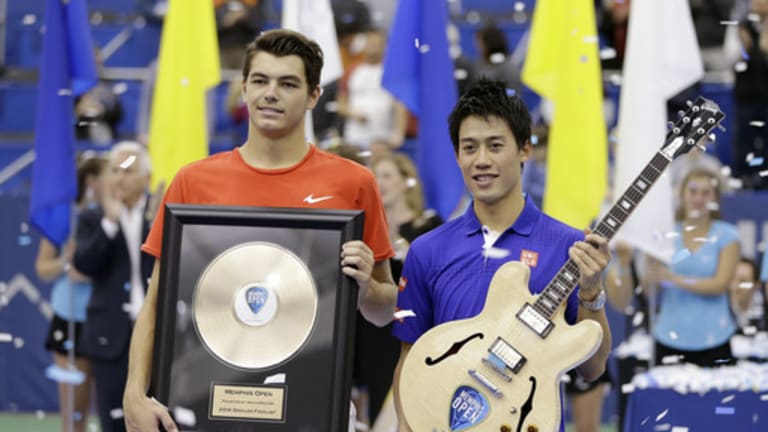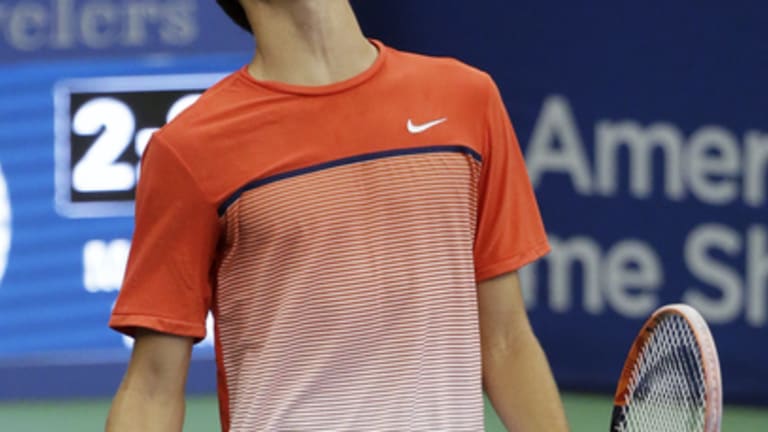“I honestly felt he was unbeatable,” 18-year-old Taylor Fritz said of his semifinal opponent in Memphis on Saturday. “He was making me look awful. There wasn’t much I could do.”
What tennis colossus was Fritz describing? Which “unbeatable” player was across the net from him? Roger Federer? Novak Djokovic? The ghost of four-tme Memphis champ Jimmy Connors? No, the man who was making Fritz “look awful” was 5’9,” 79th-ranked Ricardas Berankis of Lithuania. Berankis is a fine player, but invincible he is not. Eventually, Fritz found a way to beat him, and to reach the Memphis final, where he lost a spirited match, 6-4, 6-4, to Kei Nishikori.
Fritz may not have played like a tour rookie last week, but he still sounded and acted like one. And that modest mien is a big part of this California kid’s appeal. How many other ATP pros, when challenging a call, look deferentially downward as they do it, as if they’re a little embarrassed about having to ask for a favor? How many, when a chair umpire confirms that their serve was out, nod respectfully, as if to say, “Yes, sir, thank you, sir"? If Fritz is following in the footsteps of a great American champion, they don’t appear to be those of John McEnroe.
So far the American champion who Fritz does call to mind is a young Pete Sampras. Like Pistol Pete, Fritz has the Southern California roots—he’s from Rancho Santa Fe, just north of San Diego—the long, lanky, classic tennis build (his parents were high-level players), the unassuming demeanor, and, most important, the easy-but-lethal service motion. The differences reflect their eras: Sampras was 6’1” and a serve-and-volleyer; Fritz is 6’4” (and presumably still growing) and a power baseliner.

